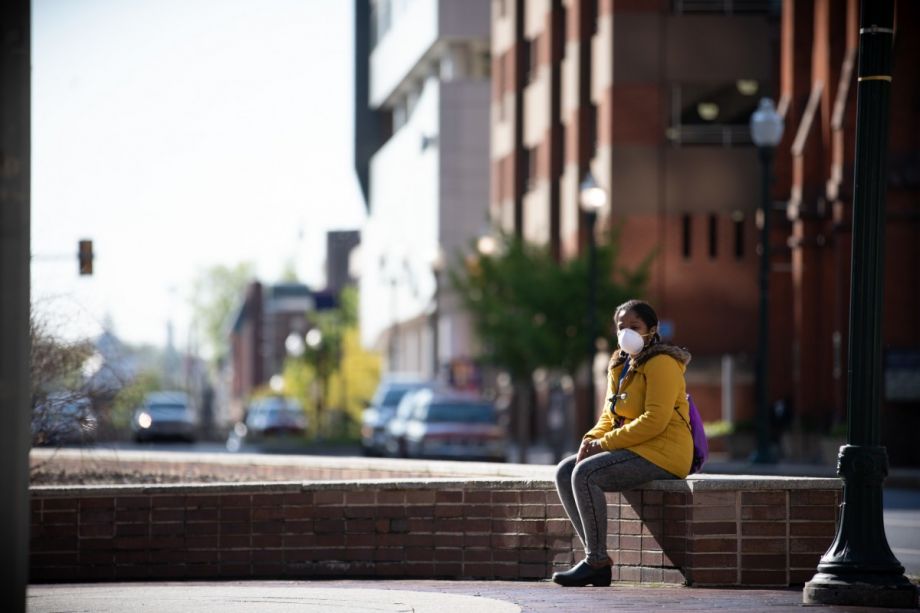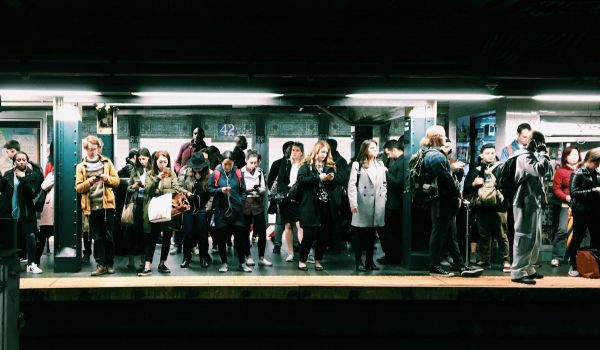Welcome to “The Mobile City,” our weekly roundup of noteworthy transportation developments.
There appears to be a fast-growing consensus that the federal transportation program should include ongoing operating assistance for mass transit, which the Federal Transit Administration has been providing under an emergency rule approved at the start of the COVID-19 pandemic. Some advocates see such assistance as an acknowledgment that public transit is as essential as roads are to get people where they’re going. Still others see it as the way to give American cities the kind of transit service essential workers deserve and everyone else would actually use.
How much assistance would the Feds need to provide to give every U.S. city effective transit? And how much more transit service would it buy? A report from the TransitCenter research and advocacy group says the government would need to support transit to the tune of $20 billion a year — and it breaks the number down to show how much better transit that would buy.
One of the reasons for the groundswell of support for federal operating assistance is that transit makes it possible for essential workers to keep working. But even the work-from-home crowd benefits from having robust transit around. Even if, as news from central Pennsylvania shows, it’s the essential workers who use mass transit most, news from New York shows what happens when everyone else stays off it. (And news from Chicago suggests that everyone else will return, eventually.)
And it’s not just the big and small cities that need decent transit for essential workers: the state of Delaware has just introduced transit-on-demand to the county seat of its most rural county, and residents responded immediately to the improvement it represented.
What $20 Billion in Operating Assistance Would Do for Urban Mass Transit Nationwide
According to a report by research and advocacy group Transit Center, published April 19, it would take only $20 billion a year to bring the quality of transit service in every city in the country up to the level of Chicago.
The report estimates that urban areas of 1 million or more would see anywhere from 29 to 35 percent more service hours with this level of federal support, while urban areas of 50,000 to 200,000 would see hours-of-service gains of anywhere from 74 to 134 percent.
“A $20 billion annual program for transit service would transform public transit in America,” the report says. “In cities all over the nation, people could get to more places in less time using transit. Jobs, schools, and other daily destinations that previously took too long to reach would become accessible. People would feel less strain on household budgets as their transportation costs shrink. They would have more time to spend with their families as time spent commuting falls.”
That’s a lot of improvement for relatively little money, and it would make American urban transportation more equitable to boot.
In Cities Large and Small, Evidence of Transit’s Importance Surfaces
In our largest cities, mass transit service means less congestion on the roads. Given that those roads are usually congested anyway, many people may not think transit makes that much of a difference, but a report from New York’s PIX11 (WPIX-TV) reveals that it does.
Here’s how: Traffic jams are already on the rise in the New York region even as transit ridership remains depressed. AAA Northeast spokesperson Robert Sinclair Jr. told the station, “Traffic in many cases is the worst that it’s ever been. In many measurements, we are seeing traffic is actually greater than pre-pandemic levels.”
The problem: Would-be riders remain fearful of catching COVID-19 while riding a bus or train, so instead, they get behind the wheel when they need to go somewhere. Yet repeated studies have shown that the risk of viral infection while riding transit is no greater than while driving or walking, assuming riders wear masks.
And both one rider quoted in the article and a news item in Streetsblog Chicago suggest that a large part of the problem may simply be one of people getting acclimatized to using transit again. Streetsblog Chicago cites a survey conducted by the Regional Transportation Authority there that found that 80 percent of “lapsed” transit riders said they would eventually return to the buses and trains once COVID fears eased.
The article, however, goes on to note that getting them back on board might take some persuasion — and some improvements in service. Respondents said that faster, more reliable service and easier transfers among Chicagoland’s three transit service providers would make riding more appealing again. (See the above item for how this could come about.)
And the agencies themselves, the article states, could use the experience and testimony of those still riding to persuade the reluctant that it’s safe to ride transit. Those people, the article notes, are disproportionately the lower-income, heavily Black and Latino service and support workers who depend on CTA, Metra and Pace service to get to and from their jobs, and they have a more favorable view of how well Chicago transit agencies are keeping vehicles and facilities safe than the lapsed riders have.
In the nation’s smaller cities, these same riders may also be keeping the financial picture for mass transit from being even worse than it is. ABC27 (WHTM) in Harrisburg, Pa., reports that while ridership fell on the four mass transit systems serving south-central Pennsylvania, it didn’t fall as sharply as it did on bigger systems elsewhere. Using data provided by the American Public Transportation Association and the Transit app, the station found ridership drops ranging from 43 percent in Lebanon to 54 percent in Harrisburg. All four systems — the other two serve Lancaster and York — reported falloffs in ridership below the national average of 62 percent.
The reason for the relatively good performance? “Our riders are not necessarily ‘choice riders,’” Richard Farr, executive director of both York County-based rabbittransit and Harrisburg-based Capital Area Transit (CAT), told the station. Stephen Miller, communications lead for the Transit app, backed him up: “The biggest drops have been in cities where a large portion of the ridership has shifted to working from home. Systems like those in Midstate Pa., where more of the riders are likely to be going to in-person work, or essential work, have seen smaller reductions in ridership.”
The article also notes that service has returned or will soon return to pre-pandemic levels on all four systems, which will become three when the York and Harrisburg operations merge on July 1.
Transit-On-Demand Comes to Lower Delaware, and Riders Respond Favorably
While smaller cities may have a large proportion of residents who depend on transit to get around, they may not have enough of them to make fixed-route transit service practical. And where such service is provided, it may operate so inefficiently as to be nearly useless for the riders it was intended to serve.
Mass Transit reports in a news release from Via Transportation that the Delaware Transit Corporation (DTC), which operates the statewide DART First State transit system, got evidence of this the day it replaced “flex route” bus service serving Georgetown, the seat of mostly rural Sussex County, and nearby Millsboro with on-demand transit service operated by Via.
The “DART Connect” service is the first micromobility service in the state, funded by an FTA grant that supports innovative transit service.
DTC CEO John Sisson said that the company was rolling out this service in response to popular demand for better service in areas that scheduled bus routes serve poorly. “The full-scale deployment of this service is expected to be a game-changer for the transit industry, especially for those systems serving more rural and suburban areas,” he said in the release.
DART Connect uses a smartphone app to pair riders with transit shuttle vans that pick riders up at or near their point of origin within 15 minutes of a request and take them to or close to their destination. The service replaces two “flex” bus routes that operated hourly roundabout service to fixed points in Georgetown and Millsboro.
Rider response to the new service suggests Sisson is right: On its first day of service, April 12, total ridership on DART Connect surpassed the combined ridership of the two flex bus routes. DTC and Delaware Department of Transportation officials quoted in the article say that they intend to implement this type of micro-transit service statewide.
Know of a development that should be featured in this column? Send a Tweet with links to @MarketStEl using the hashtag #mobilecity.

Next City contributor Sandy Smith is the home and real estate editor at Philadelphia magazine. Over the years, his work has appeared in Hidden City Philadelphia, the Philadelphia Inquirer and other local and regional publications. His interest in cities stretches back to his youth in Kansas City, and his career in journalism and media relations extends back that far as well.
Follow Sandy .(JavaScript must be enabled to view this email address)
















